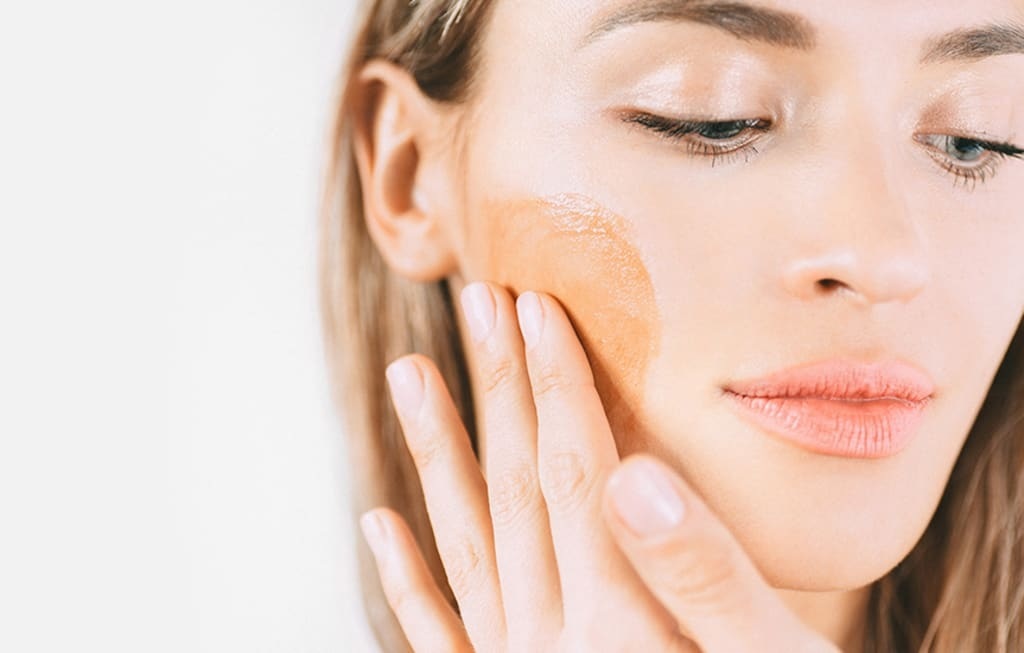Do you want a fake tan while dealing with acne-prone skin? There are certain things you need to keep in mind when using tanning lotions on your face. You have to be extra cautious while choosing a tanner. In this article, we will share everything about using fake tan on acne-prone skin.

What Is Fake Tan?
The tanning results which you get using self-tanners are known as a fake tan. There are two ways of applying self-tanners to get a fake tan. The most popular method of getting a fake tan is applying the self-tanning lotions directly to your skin. Another way of applying self-tanner is by mixing it with a moisturizer before application.
It usually takes a few hours to see the tanning effect, which usually looks like a natural tan. However, the result will surely depend on the product you used and how you applied the tanner.
Self-tanners are different from powder bronzers since they don’t get washed away when you remove the makeup. There are various types of self-tanners. You can get self-tanners as liquid drops, mousses, sprays, lotions, and creams. The fake tanning starts to fade after 4-5 days.
How Should You Use Self-Tanners with Acne?
The process of using a self-tanner on acne is almost the same as applying the tanner on normal skin. However, the important thing you should ensure is to get the best self-tanner for acne-prone skin that doesn’t contain oil. If you apply a self-tanner that contains oil, it will result in more acne spots.
Here are the steps to prepare the skin before applying self-tanner:
Shave the Facial Hair
You have to shave the face properly to ensure the skin gets even tan. Ensure that you have shaved the facial hair 24 hours before applying the tanning lotion.
Exfoliate
An hour before applying tanning lotion, clean the face to remove any makeup and dirt from the skin. You should use a facial brush to exfoliate the face.
Alternatively, a mechanical Exfoliator that contains the exfoliating fruit acid can be used to exfoliate the skin. However, you should avoid being too harsh on acne-prone skin.
Follow the Instructions
You will find the instructions to apply self-tanner on the product. Ensure to follow the steps properly. Apply the self-tanner and let it dry.
Can You Use Self-Tanners on Your Face?
Yes, they are made to be applied on the face. The natural tan we get from the sun usually damages our skin and results in severe skin-related issues. Thus, self-tanners are the best alternative you can use to tan your face without any skin damage.
While buying self-tanners for the face, you need to ensure it is not created particularly in the body. You should purchase the best tanning lotion for face because the self-tanners designed for the body can be harsh on acne-prone skin.
Can Self-Tanners Cause More Acne Spots?
If you buy a self-tanner that is non-comedogenic and doesn’t oil, then there are limited chances of getting acne breakout and spots. However, non-acnegenic self-tanners can more likely clog your pores and result in more acne spots. You need to buy self-tanners that claim they are suitable for acne and oily skin.
You definitely can wear fake tan on acne-prone skin. Just the way you apply make-up on acne-prone skin to hide skin blemishes, use self-tanners to get an even skin tone. Additionally, if you want to get a tan on acne-prone skin, self-tanners are a better option compared with sun exposure which can result in skin irritation.
Conclusion
We hope you understand that self-tanners can be applied to get a fake tan on acne-prone skin. There are certain things that one needs to keep in mind while buying tanning lotions for oily skin. You also should follow the steps of shaving and exfoliating to get a tan that looks even and natural.